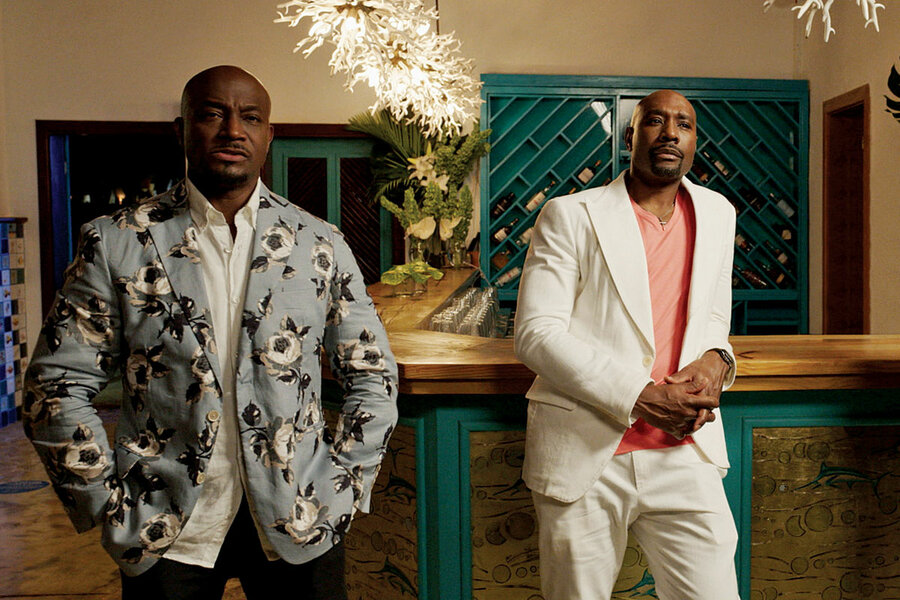Feeling seen: Saying goodbye to two decades of ‘The Best Man’
Loading...
When “The Best Man” was released in 1999, I didn’t know I would be writing about it – and still enjoying it – 23 years later.
I was an avid moviegoer when the film debuted, and I was excited to see a cast of characters that looked like me. The movie arrived around the time of others that I enjoyed such as “Life,” starring Eddie Murphy and Martin Lawrence, and Spike Lee’s “He Got Game” with Denzel Washington. I was getting used to seeing an array of images of Black people on screen during my coming-of-age years, so I welcomed “The Best Man.”
After two decades and one sequel, the franchise wrapped up recently with an eight-part series streaming on Peacock, “The Best Man: The Final Chapters.”
Variety reports that the series hit No. 5 on the Nielsen Top 10 Streaming Originals chart for the week of Dec. 19-25, the week it was released. It marked the first time a Peacock project made the list. It was also the No. 1 streaming program for Black audiences over a two-week period by early January.
By choosing a series instead of, say, a two-hour movie, creator and director Malcolm Lee gave viewers a well-rounded conclusion to the stories of these friends. Their journeys weren’t without heartache and disappointment, but that balance of life experiences is what I have appreciated for all these years.
As far as Black entertainment is currently concerned, there isn’t a shortage of programming where people are gangsters, shooters, and drug dealers – which, to be clear, are a very real part of life. But the balance can be beautiful when we are able to see ourselves as more – as parents, husbands, supporters, and mistake-makers, who have dreams and live “normal” lives.
My relationship with “The Best Man” began on a date in a dimly lit, packed theater in Washington, D.C., when I was in college. I distinctly remember my date squeezing my hand when fictional NFL star Lance Sullivan, played by heartthrob Morris Chestnut, appeared on the screen.
Back then I was a student journalist and an aspiring author. I think it’s what made me first identify with actor Taye Diggs’ character, Harper Stewart, a writer who sought and finally experienced success with the publication of his first novel. In college, Harper had a tryst with Lance’s now-fiancée, Mia (played by Monica Calhoun). Lance learns about the fling on the eve of his wedding, and the movie’s drama ensues.
Even though I questioned the plot – would Harper really have divulged such a personal secret, even if somewhat disguised, in his book? – I still remember how refreshing it was to see beautiful, Black, well-written characters who were funny and inspirational. They were in their late 20s and early 30s, which I thought was so grown-up at the time, and they had careers. Most importantly, everyone was comfortable in their own skin, which I wasn’t.
In the 2013 sequel, “The Best Man Holiday,” each character returns, more than a decade on, with more responsibilities, like kids and marriages, and they coalesce around a tragic death.
Now that I am married with children, and I have been the shoulder for friends to lean on after divorces, untimely deaths of children and parents – and even came close to death myself – the totality of all three iterations hit closer to home. It made me appreciate the good character development that Black audiences have so yearned for. I loved seeing four male friends bond with each other, verbalize their love for one another, show grace, and have fun. My friends are all spread out geographically, which makes me wish that I had that physical connection with people.
The final episodes gave us closure. Each character’s journey is complete – some not happily – which is unlike Hollywood, but real. More balanced.
It is difficult for me to say goodbye. I am grateful to have been on a journey with characters who, like me, wrestle with regrets, ambition, depression, success, and failure. Ultimately, Mr. Lee proved to Hollywood that Black cinema is worth investing in – for 23 years.
The series “The Best Man: The Final Chapters,” streaming on Peacock, is rated TV-MA, for mature audiences. The films “The Best Man” and “The Best Man Holiday” are both rated R for language and sexual content; the sequel also has brief nudity.








